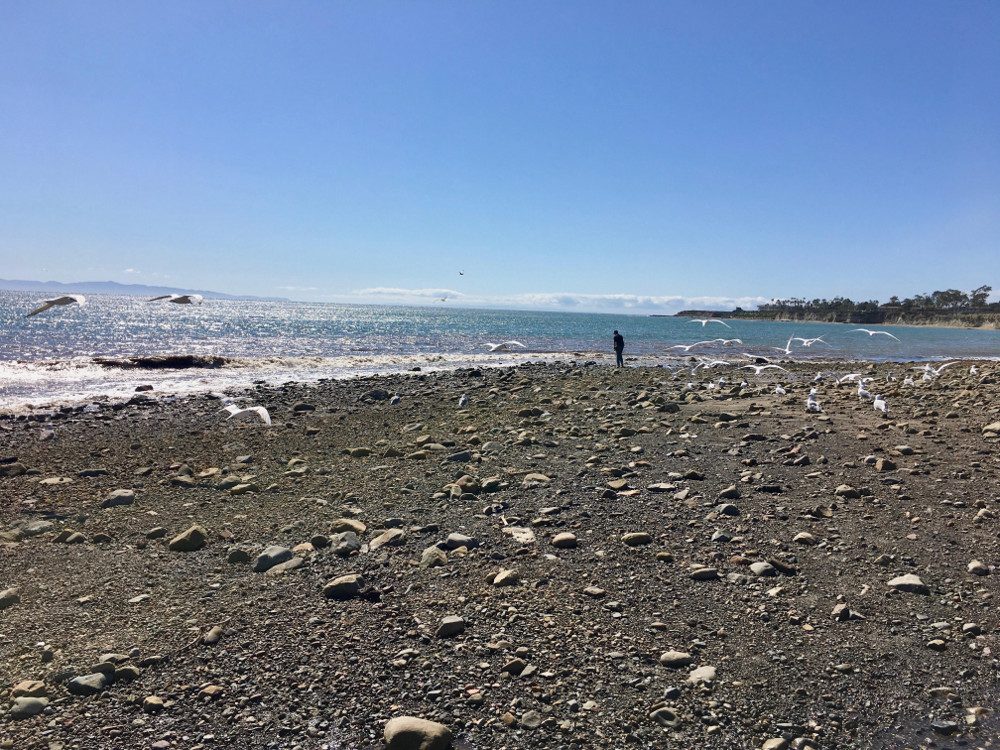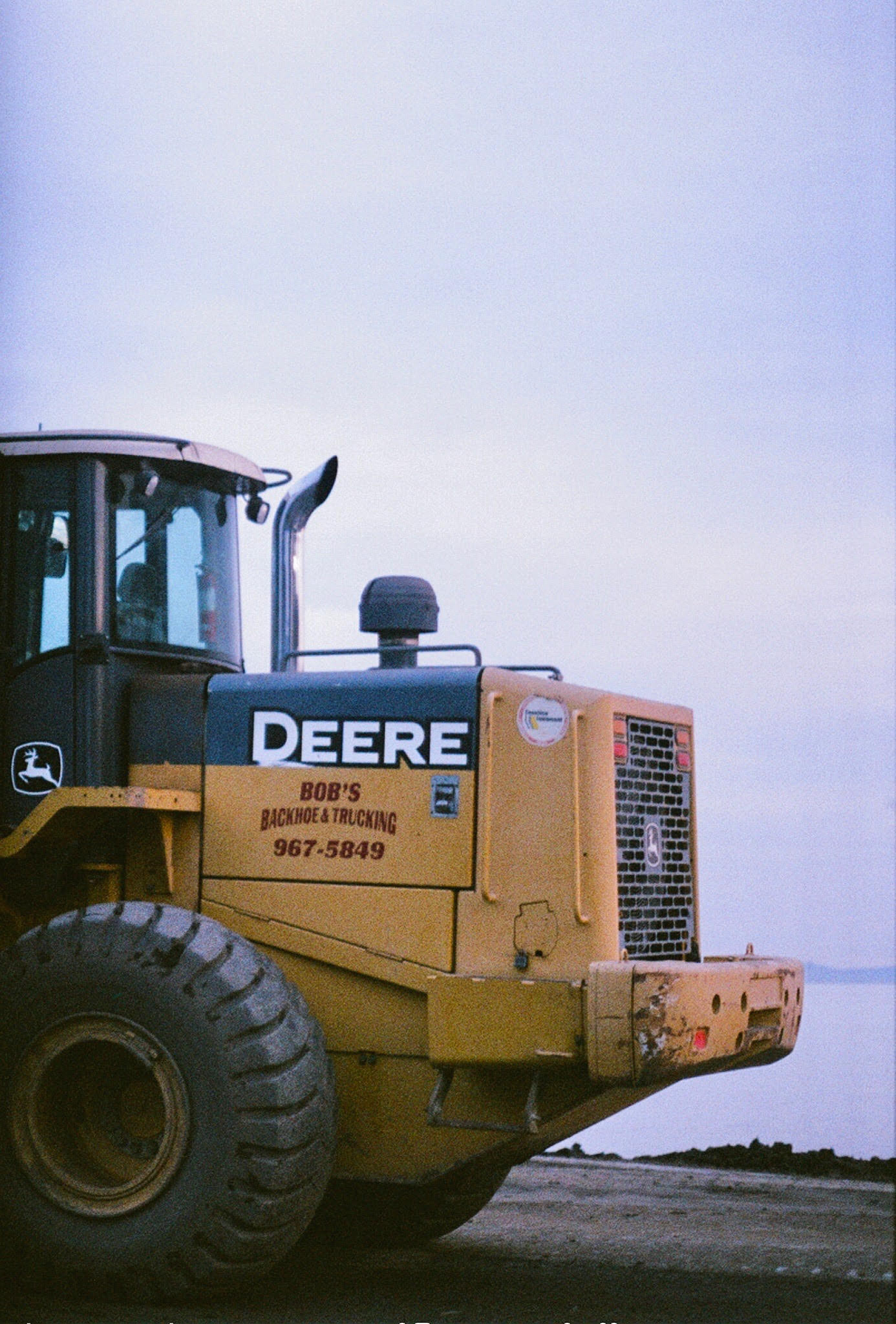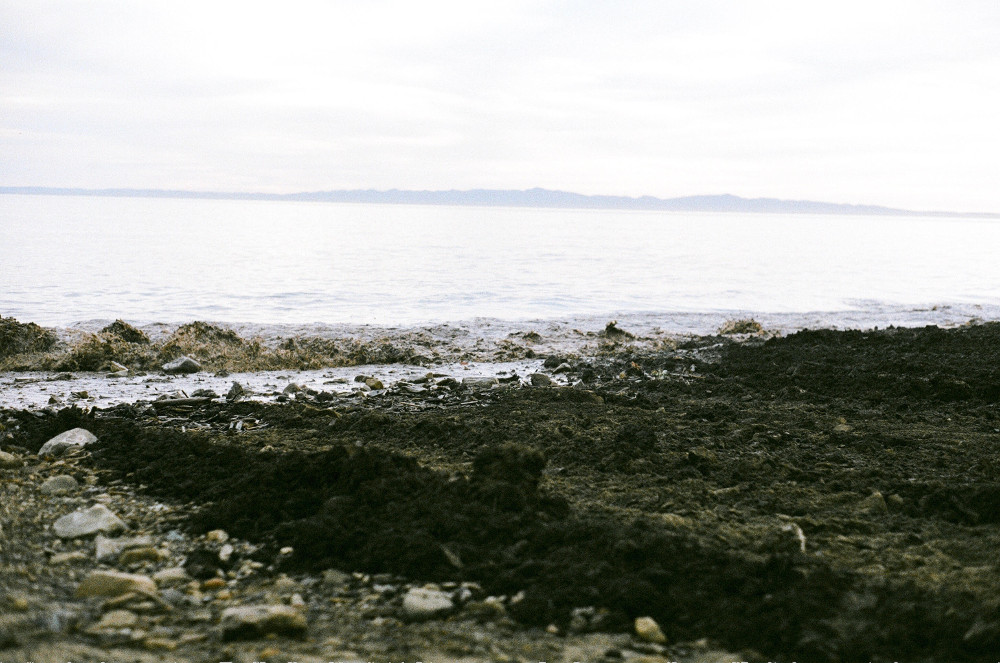Injustice with Each Load
Debris-Flow Removal Through the Lens of Environmental Justice

Below the campus of UC Santa Barbara overlook, a large wheel loader is depositing ash-filled debris onto Goleta Beach, indenting a deep tread pattern into the sodden sand. The muddied terrain, like quicksand, smells of smoke as it touches the water, awaiting the tide to clear it away.
Following the Thomas Fire and storms in the area, mudslides brought down loads of debris that filled the creeks and streets of Montecito. This debris flow is arguably Santa Barbara’s worst disaster, holding a high death toll of 23 people and millions in property damage. The removal of the debris-flow mud began its journey to Goleta Beach, but why the dirt was arriving there was a mystery to many.
Goleta residents were surprised by the northbound truck-loads of debris storming into their park. They weren’t the only ones. The City of Goleta, upon receiving numerous complaints, released a statement claiming, “our city was not adequately notified about this decision and therefore we could not notify the community that mud would be discharged at Goleta Beach.” Although deemed necessary for search and rescue efforts, many wonder if the beach was the proper location even in this time-sensitive situation. Why the county failed to inform the city remains unclear.

Despite many national and state level agencies approving the site, access to Goleta Beach has been intermittently restricted by the Santa Barbara County Health Department. This is due to harmful levels of bacteria that has been measured to be over four times the Environmental Protection Agency’s safety standard even 11 days after dumping permits ended. Deputy Director of Santa Barbara County Tom Fayram in an interview did not seem concerned about the contamination levels. He revealed the deposit sites at Goleta Beach were chosen for easy accessibility, while still claiming that as initial emergency threats finalized, the county would find alternative upland dumping sites.
While the natural disasters that struck Santa Barbara County were blind to social status, the immediate cleanup effort may not have been so. At face value, many question the decision to transport thousands of truckloads filled with debris from affluent Montecito to the underserved community of Goleta, 12 miles to the north. In fact, several reports exist that point out the inherent environmental injustice built into the county’s disaster plan and response.
David Bacon, a local charter captain and fisherman, has reported that the dumping of contaminated debris puts many surrounding underserved communities at a disadvantage. He provides the example that deposits on Goleta Beach not only impact aesthetics and restrict activity for beachgoers, but burden a large population of subsistence anglers who use the Goleta Pier to provide food for their families. By using the pier, they legally avoid the purchase of a fishing license.

Contrarily, a local environmental group, Heal the Ocean, took to their Facebook page to address many public concerns. The group accepted the ocean dumping as the only solution given the circumstance and denounced a connection between wealth and the Public Works Department’s decisions. In reference to the common concern with debris movement from a fortunate to a less affluent area, Heal the Ocean’s wrote, “economic differences are not taken into consideration by Public Works official when strategizing.”
There is a clear distinction between the two areas, with Montecito’s average household income of over $241,000 per year being more than 2.5 times Goleta’s. Similarly, the Hispanic community of Goleta accounts for 40 percent of its total population, compared to Montecito’s 6 percent recorded in 2010, additionally representing a racial disparity.
Climate Justice is a term rising in popularity in the environmental world, focusing on the importance of addressing climate change while simultaneously working to alleviate the unequal burdens it has created. Although the organization Heal the Ocean denied the importance of socio-economic differences in the response to the mudslide, Climate Justice proves the need for this heightened awareness in order to reach the much needed long-term solutions of sustainability that will create a resilience for future disasters. With diverse community involvement and a deeper systemic change, public inclusion can help find a more suitable solution that works for the county as well as the City of Goleta.
The trucks continued on, dumping load after load. “BEACH CLOSED FOR SWIMMING: CONTAMINATED WATER,” looming over stagnant pools. The waves turned to the color of clay as they broke onto the shore, the tide rising to wash the dumping site away. Will we see the system change as the discrepancies of the present situation come to light? As we prepare for future disasters — wildfires, floods, mudslides, earthquakes — can city and county officials adapt and provide a more just recovery with an inclusive discussion? These changes should be at the forefront of our collective consciousness. As the emergency responders say, “It is not a matter of ‘if’ another wildfire will occur in our area, but ‘when.’”
Leila Kazerouni is a third-year student at the University of California, Santa Barbara majoring in Environmental Studies.



